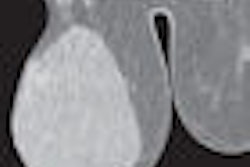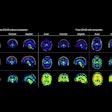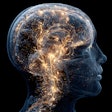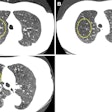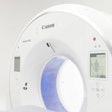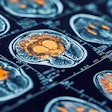
NEW YORK (Reuters Health), Jun 20 - Assessment of regional atrophy using voxel-based morphometry (VBM) can be used to predict the rate of decline in patients with mild Alzheimer's disease, according to a report in the June 3 issue of Neurology.
"A better knowledge of the factors which can predict the severity of disease progression may have important implications for patient care, for the development of clinical trials with new therapeutic agents, and for public health," the authors of the report explain.
Dr. Marie Sarazin from Hopital de la Salpetriere, Paris, and associates analyzed the respective prognostic power of neuropsychological tests and regional atrophy using VBM in 23 patients with mild Alzheimer's disease.
Baseline global cognitive efficiency did not differ between patients who became slow decliners or fast decliners over the subsequent three years, the authors report.
Both slow and fast decliners showed significant clusters of reduced gray matter concentration by VBM, the researchers note, particularly in the temporal lobes, left occipital lobe and fusiform gyrus, left frontal lobe, and the insula bilaterally.
VBM revealed significantly greater gray matter reductions in the fast decliner group bilaterally in the medial occipitoparietal lobes covering the calcarine fissure and surrounding cortex, the cuneus, precuneus, and lingual gyrus.
Regional differences in gray matter concentration corresponded to less gray matter concentration in the fast decliners rather than more gray matter in the slow decliners, the investigators say.
"VBM, more than neuropsychology, is able to detect a future rapid cognitive decline and to differentiate two close stages of the disease, even in a small sample of patients with mild Alzheimer's disease," the authors conclude. "Medial parieto-occipital atrophy is a good prognostic marker for Alzheimer's disease."
"The recent development of powerful image acquisition and analysis tools has dramatically enhanced our ability to probe into the neurobiology of Alzheimer's disease," write Dr. Giovanni B. Frisoni from IRCCS Centro San Giovanni di Dio Fatebenefratelli, Brescia, Italy, and Dr. Jennifer J. Whitwell from the Mayo Clinic, Rochester, MN, in a related editorial.
"However, we should be constantly vigilant about Mark Twain's maxim that 'to a man with a hammer, everything looks like a nail' and be careful not to overstretch the hammers available to date."
"A large amount of prospective data are currently being collected worldwide that will in the next few years allow us to more accurately outline the natural history of the neurobiology of Alzheimer's disease and refine tools for individual predictions," the editorialists conclude.
Neurology 2008;70:2194-2195,2201-2211.
Last Updated: 2008-06-18 19:30:30 -0400 (Reuters Health)
Copyright © 2008 Reuters Limited. All rights reserved. Republication or redistribution of Reuters content, including by framing or similar means, is expressly prohibited without the prior written consent of Reuters. Reuters shall not be liable for any errors or delays in the content, or for any actions taken in reliance thereon. Reuters and the Reuters sphere logo are registered trademarks and trademarks of the Reuters group of companies around the world.





